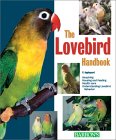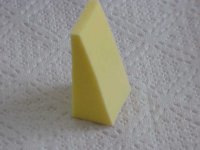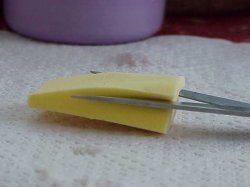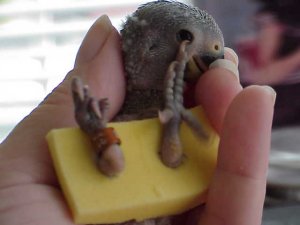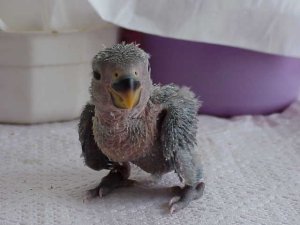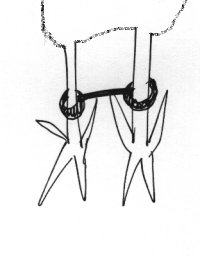Fixing Splay Legs
Sometimes even with the greatest of care, a baby can develop splay legs. Preventive measures are best (such as making sure that there is enough nesting material in the box and that the diet is nutritionally complete for the parents), but every once and a while, the mother hen will sit too tight on a baby and cause one or both legs to appear to stick out from the body. Here is a tutorial on a very effective way to remedy this problem in baby lovebirds.
Please take your baby bird to an avian veterinarian if you are unable to do this procedure. If caught at an early age, splay legs are very correctable. Don’t let it go for more than a day or two if you are having difficulty creating a hobble yourself.
Use a makeup sponge in the wedge shape. These are the proper thickness. You will have to trim down the wider end so that it is even.
Use scissors to trim down the wider end so it is flat across the top. It doesn’t have to look pretty, just be even.
Make two slits in the sponge using the end of a scissors point. Turn the scissors to make a hole somewhat round. The two slits should be just wide enough that the legs will go straight down from the body. Don’t put them too close together as they will tear into each other.
First push one foot through a slit, then pull it through the other side. You need to be careful, but you will have to pull it. If it is too hard, you may have to make the slit a tiny bit larger. Once you get one leg through, push up the sponge past the leg joint so it is against the body, then push the other foot through the second slit. You have to find a balance here. You don’t want to harm the bird’s legs by overforcing it, but you will have to pull on them a bit to get them properly situated.
This will be very awkward for the baby. It will try to drag itself around. Therefore, it is a good idea to set them in a cup with soft material on the bottom. Kleenex (ONLY unscented Kleenex please!) can make a nice soft padding for them. Bigger birds will crawl out. You may need a deeper bowl. Some do okay with their siblings (but not in the nestbox with the mother as she will remove the sponge).
Check the sponge a few times a day to make sure it is high against the body so it doesn’t come off. If it gets soiled, change it every couple of days. But it is best to leave it on straight for a week if you can.
I recommend leaving the sponge on for one week. It may need to go on for longer if the bird is older. The prime time to catch splay legs is between 8 and 14 days of age.
Another option is to create a hobble – but this requires more skill. Below is an illustration of a hobble made using surgical tape folded into itself so it does not pull on the skin.

